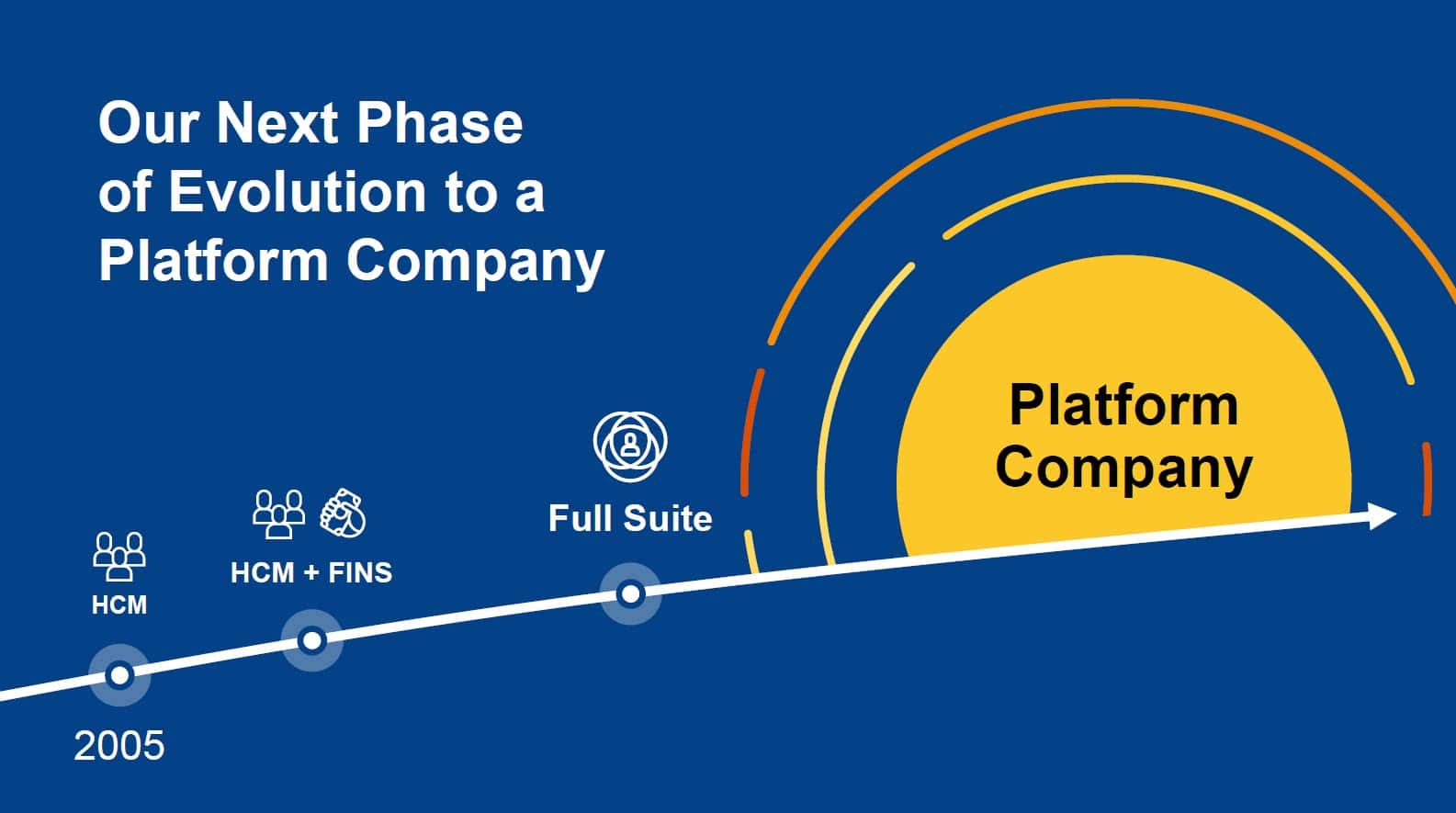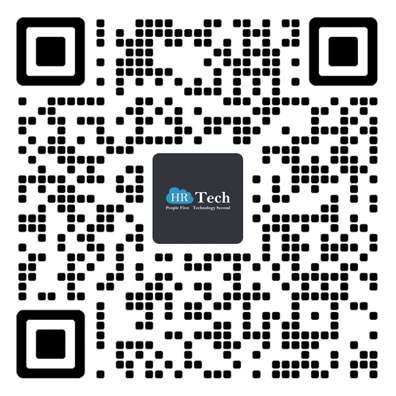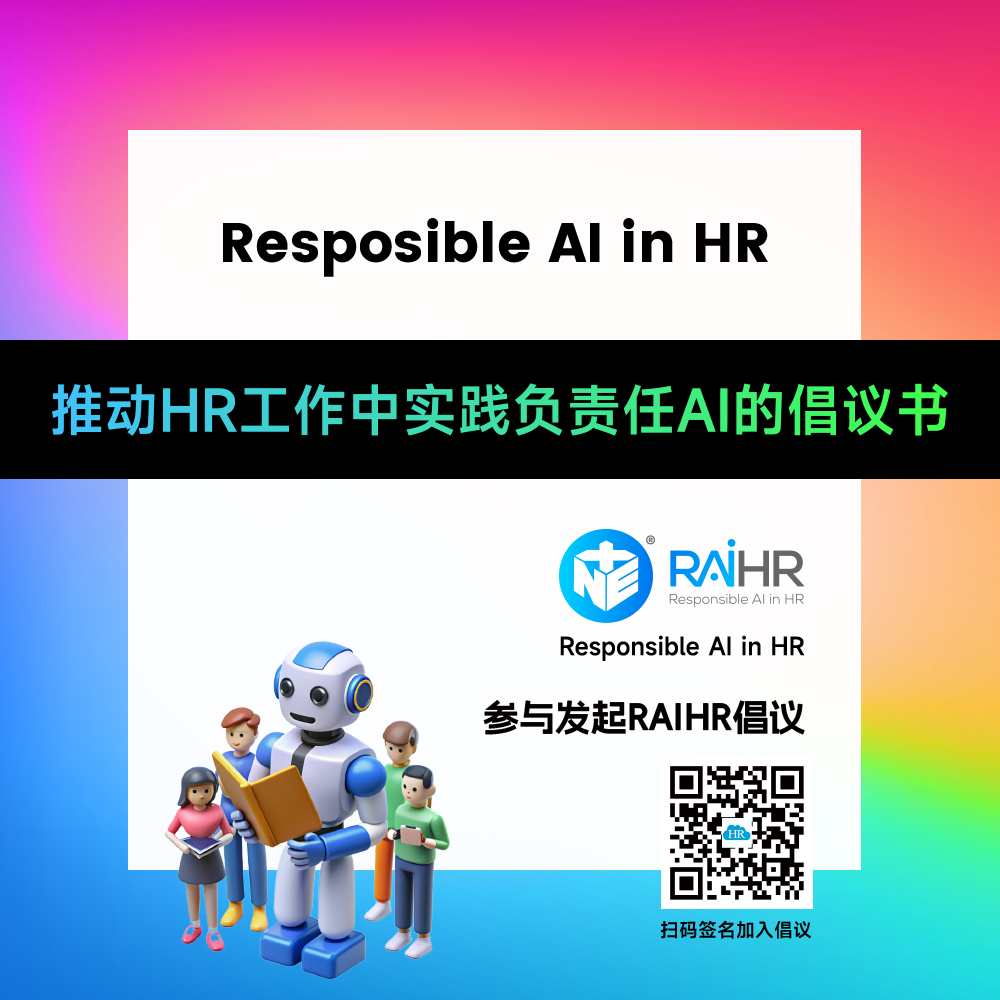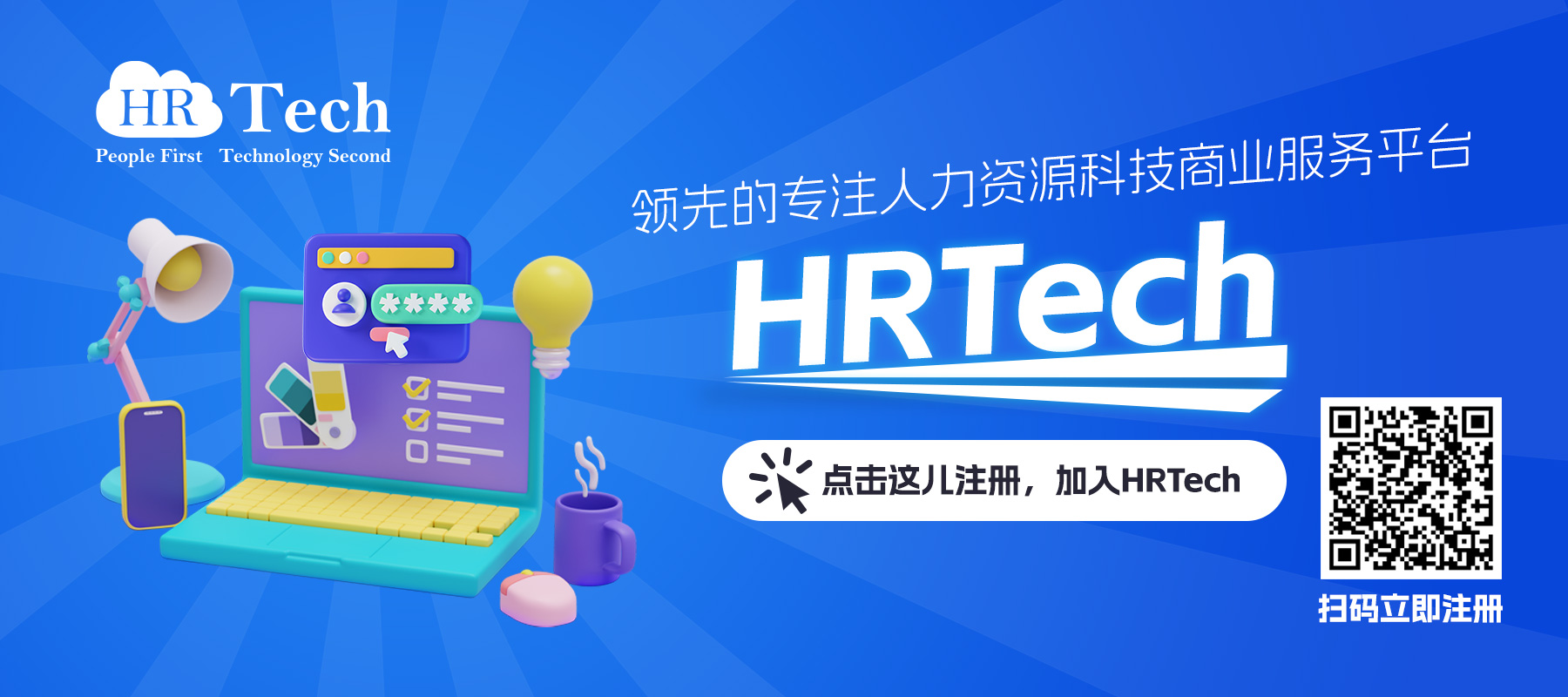资讯
【芬兰】以人为本的IT体验管理公司HappySignals获得1200万欧元融资,利用以人为本的数据和AI改变IT决策
以人为本的 IT 体验管理公司 HappySignals 获得由Mandatum Asset Management领投、现有投资者Nauta和Vendep Capital 参投的 1200 万欧元融资。这笔投资将用于促进销售、营销和产品开发,以便在不断增长的 IT 体验管理 (ITXM) 市场进行全球扩张。
对于全球大型企业来说,了解员工使用 IT 的体验、做出数据驱动的决策以及在正确的领域改进 IT 运营和成果比以往任何时候都更加重要。
HappySignals 正通过利用员工体验数据和人工智能,帮助企业转变其 IT 和服务,使其更加以人为本。这使他们能够做出明智的决策,并专注于真正重要的事情。通过优先考虑员工的幸福感和生产力,企业可以节约成本并提高业务价值。百事可乐、富士通、美卓和利洁时等公司通过专注于提供可提升业务运营和员工体验的服务,将其 IT 转变为价值创造者。
HappySignals 的首席执行官兼联合创始人 Sami Kallio 强调了这项投资的重要意义:
"IT 组织的主要职责是通过有效的 IT 支持和工具提高整个组织的效率和满意度。从历史上看,IT 部门一直专注于技术和流程指标,这些指标主要衡量 IT 部门如何运作,而不是其创造或可能创造的价值。"
"用 IT 语言来说,我们正在谈论从 SLA(服务水平协议)转向 XLA(体验水平协议)。IT 部门应继续衡量传统指标,但 IT 部门的三大支柱--人员、流程和技术--应始终按此顺序加以考虑。这就是我们帮助 IT 组织收集和分析员工体验数据,从而做出更好决策的地方。
领投方Mandatum资产管理公司的成长型股权投资团队是一家北欧成长型股权投资机构,专注于北欧成长型公司的规模扩张阶段。
"我们很高兴能主导 HappySignals 的本轮融资,这将进一步加快他们的国际化发展进程。我们相信,HappySignals 凭借其以人为本的方法,找到了市场上尚未解决的问题的解决方案。事实上,他们的蓝筹客户就是其方法和解决方案质量的真实写照。对 HappySignals 的投资是对我们第二期成长型股权投资基金的极好补充。Mandatum 资产管理公司投资经理 Rami Salonen 表示:"我们很高兴能与公司创始人、管理层和其他所有者合作,加速公司已经非常重要的国际业务的增长。
HappySignals 由三位芬兰 IT 创新者 Sami Kallio、Pasi Nikkanen 和 Sami Aarnio 于 2014 年创立。他们认为,只有以人为本的方法才能提供真正的最终用户洞察力,以及了解什么是最重要的改进优先级所需的上下文。采取以人为本的 IT 体验方法有助于组织推动更好的决策,因为它能突出对最终用户最重要的改进机会。HappySignals IT 体验管理平台和 ITXM 框架改变了大型企业的 IT 状况,使 IT 团队及其最终用户每天都更快乐。通过优先考虑员工的幸福感和生产力,企业可以节约成本并提高业务价值。
资讯
【美国】人工智能综合营收平台Xfactor.io获得1600万美元A轮融资
人工智能驱动的综合营收平台Xfactor.io 宣布获得 1600 万美元 A 轮融资,由Accel和 XFactor.io 首席执行官兼创始人 Mike Carpenter 共同领投,Lightspeed等公司参投。Xfactor.io 通过提供一个统一销售、营销和运营团队的平台,继续应对首席营收官(CRO)面临的挑战。有了 Xfactor.io,营收负责人可以进行精确规划、有价值地执行,并做出实时、智能的决策,从而加速管道、扩大交易规模并提高胜率。
"Accel合伙人Sameer Gandhi表示:"CRO几乎总是面临传统决策流程的低效和盲点。"Xfactor 的人工智能为他们提供了广泛的洞察力,同时又不影响准确性,因此 CRO 可以清晰地做出明智的预测性选择。我们期待与 Mike Carpenter 和团队其他成员合作。
这笔资金将在推进Xfactor.io产品方面发挥关键作用,优先增强其人工智能能力,使收入领导者能够优化整个市场推广团队的规划和绩效。这一引擎将简化战略决策并降低风险,使收入领导者能够驾驭当今复杂的市场推广环境,实现增长目标。
Xfactor.io 创始人兼首席执行官 Mike Carpenter 也是本轮融资的共同负责人。Mike 曾任 CrowdStrike 公司全球销售和现场运营总裁,负责实现业务大幅增长,并最终于 2019 年上市。Mike在McAfee工作了25年,协助领导了McAfee被英特尔、Tanium和Crowdstrike的收购,是识别企业内部促进增长的难以捉摸的 "X因素"、利用实时数据和市场情报推动成功的专家。
"Xfactor.io 首席执行官Mike Carpenter表示:"我一直致力于满足收入领导者未得到满足的需求。Xfactor.io 首席执行官Mike Carpenter表示:"我们致力于为收入领导者提供工具,帮助他们做出更明智的市场决策、降低风险并实现宏伟的增长目标。通过这笔投资,我们的目标是实现市场推广战略的自动化,实时统一销售、营销和运营团队,为B2B企业做出明智的决策并使投资更进一步。
关于Xfactor.io
Xfactor.io是一个人工智能驱动的营收平台,它将销售、营销和运营团队与有效规划、价值驱动的执行和关键决策结合在一起。该平台利用实时数据和人工智能建模来推动智能化的市场策略,从而降低风险并提高底线价值。Xfactor.io 专为营收领导者打造,由营收领导者管理,使企业能够优化投资、实现宏伟的增长目标并最大限度地提高效率,从而加速管道、扩大交易规模并提高胜率。在 Xfactor.io 以价值执行,实时调整。
关于 Accel
Accel是一家全球性风险投资公司,是各地杰出团队从创业到私营公司成长各个阶段的第一合作伙伴。Atlassian、Bumble、CrowdStrike、Fiverr、Flipkart、Freshworks、Qualtrics、Scale、Segment、Slack、Spotify、Squarespace、Tenable 和 UiPath 等公司都是 Accel 在过去 40 多年中支持过的公司。我们帮助雄心勃勃的企业家建立标志性的全球企业。
资讯
HR科技动态:Workday说自己要 All in AI,但要向市场主导的战略转型
刚刚Workday在旧金山举办了Workday 的创新峰会揭示了公司由产品主导向市场主导的战略转型。Workday一直以云技术为核心,自主开发了面向对象的数据系统和全球安全架构。然而,随着市场的演进和竞争的加剧,公司在新任CEO Carl Eschenbach的领导下,开始转向市场导向的商业模式。
在这次转型中,Workday开始拓宽其业务模型,更加开放地与合作伙伴合作。公司不再限制API的使用和合作伙伴的接入,而是致力于构建一个像苹果iPhone那样的开放平台,允许更多的行业应用集成到其系统中。这一策略旨在提供更加灵活和综合的企业解决方案,以适应不同行业的需求。
同时,Workday也大力投入到人工智能技术的开发中,推出了基于企业自有数据的微型机器学习模型(micro-LLMs),并在全球范围内调整这些模型以满足本地客户的需求。此外,Workday正在将其人才智能市场向外扩展,通过与多个行业解决方案提供商的合作,强化其在健康护理和金融等领域的业务。
AI技术的应用不仅仅限于技术层面的改进,Workday还通过这些技术优化了用户体验,使得各种任务的完成变得更加便捷。例如,在Workday平台上,用户可以看到AI图标,通过点击即可获得智能辅助完成工作。
在人才管理方面,Workday引入了许多新功能,如智能工作架构中心(Intelligent Job Architecture Hub)以及加强的Workday人才市场,这些都是为了帮助企业简化和改进职位描述和技能需求。
此外,Workday的领导层也展现出了更开放和实用的态度,这对公司未来的发展是一个积极的信号。总的来说,Workday的这一系列战略调整,旨在更好地适应快速变化的市场需求,提高公司的竞争力和市场份额。
Josh Bersin 写了这篇文章,强烈推荐给大家了解下:
刚刚参加了Workday创新峰会,有很多内容值得讨论。在刚刚庆祝了其成立19周年之际,该公司正在进行重大转型。而且,不仅仅是产品创新在进行,公司的业务模式也在大幅扩展。
Workday一直是一家以产品为导向的公司
Workday的成功很大程度上归功于其专注于“为云而生”。Workday没有采用典型的以数据库为中心的架构来构建商业应用程序,而是从零开始开发了自己的面向对象的数据系统、集成的工作流系统和全球安全架构。没有人知道云计算会如此重要,也没有人预料到我们会有像Google、Microsoft和Amazon这样的“超级计算”平台。我们也无法预测全球数据治理、AI或者跨数千服务器分布的数据和应用程序的出现。
在Aneel Bhusri的领导下,Workday做到了这一点。他们不仅销售架构,还销售了“一体化的力量”。在Workday中,不同于其他ERP商业系统,所有应用程序都被设计为可以协同工作。没有收购,没有集成,没有开放系统:只有一个设计精美、易于使用、可扩展的企业应用程序。(我注意到这让我想起了当时的iPhone:美观、易用且封闭。)
这个“美丽的围墙花园”为Workday服务良好。而Oracle、SAP和其他供应商在重新设计其客户端-服务器应用程序和获取缺失部分时挣扎,Workday却如野火般成长,现在已成为一家全球ERP供应商,拥有超过73亿美元的经常性收入、超过10,000个企业和中端市场客户,以及以信任、客户关注和质量而闻名的品牌。而且,这一切都是在创始团队基本上仍在位的情况下发生的。
去年,Workday的联合创始人兼CEO Aneel Bhusri认为是时候退居幕后了,公司聘请了Carl Eschenbach担任CEO。现在,事情开始改变。该公司正在成为一家“以市场为导向”的企业。
Workday的“以产品为导向”的重点既有好处也有坏处。Workday不容易集成,开发者可用的API很少,公司也限制了其合作伙伴。作为其保持纯净使命的一部分,Workday阻止了许多供应商的“合作”,并迫使集成商支付高额费用并认证专门团队。这种“稀缺”策略创造了高需求和高价格,而客户实际上对此感到满意。
一切都很好,直到情况开始改变。如今,随着ERP堆栈各层面的竞争供应商越来越多,Workday正在变得更加务实。正如我将在下文中解释的那样,他们正在将信息从“一体化的力量”变为“Workday是一个平台”。
Workday正在成为一家以市场为导向的公司
人力资源管理(HCM)和财务市场非常复杂。有数十个子市场、应用领域和行业解决方案需要解决。一个为大型医院系统设计的HR系统不太可能需要与为全球保险公司设计的系统相同的功能。因此,Workday开始意识到,尽管其系统集成且功能强大,但它无法跟上。
而且,在HR本身,有数百家供应商销售招聘工具、职业系统、学习平台、参与工具、移动应用程序、福利和数据分析系统。每一个子市场都在被AI转型。(例如,我们即将发布的关于人才智能的研究将向您展示这是多么的碎片化。)
Workday很难跟上。该公司开始了一系列收购(Platfora、Mediacore、Adaptive Insights、VNDLY、Peakon、HiredScore等)。这迫使产品团队专注于用户界面和架构集成,从而在某种程度上减缓了功能扩展。许多希望与Workday集成的合作伙伴(客户需求)被忽视了。
在Carl的领导下,所有这些都在改变。Workday现在对合作伙伴、独立软件供应商、经销商和行业解决方案完全开放。整个创新峰会将近25%的时间专注于Workday的开放合作伙伴策略。而且重要的信息是:Workday不是一个“系统”,它是一个“平台”。
这是什么意思?这意味着如果您购买Workday,您就是在购买一个像iPhone那样的平台。它运行非常好,安全,并将配备一系列行业应用程序以帮助您构建完整解决方案。这对Apple和Salesforce有效,对Workday来说可能也会很有效。SAP也有类似的产品,但其集成程度要复杂得多。这让Workday能够深入新的领域和子市场。(Workday突出显示了其在医疗保健领域与Shiftwizard、在财务领域与Auditoria和Kyriba的新集成等。这些不仅仅是独立软件供应商关系:Workday正在转售这些产品。
但还有更多。
Workday公开其AI战略
在去年的活动中,Workday对AI真的犹豫不决。他们给了我们很多关于“Workday AI”的手势讨论,但这并没有太多意义。好吧,他们已经想通了,让我简单解释一下。
企业并不是因为AI本身而想要AI,他们绝对不想要可能产生法律风险的众包数据。他们想要的是可以在自己的数据上运行的AI解决方案。
现在,Workday已经开始了各种AI功能,每个功能都通过其自己的“微型大语言模型”交付,这些模型是在公司自己的数据上训练的。 对于更大的AI功能,他们使用一个全球大语言模型,为每个客户本地调整权重和偏差。(这与Microsoft Copilot的工作方式类似。)因此,您的企业数据训练您的“版本”的Workday,而不与其他人共享任何数据。
在某些情况下(例如技能云),客户可以选择匿名分享数据。这让Workday能够构建一个“全球技能数据库”,每个人都可以分享。像Eightfold、Lightcast和Draup这样的供应商在大规模(远超Workday目前的做法)上做到了这一点,所以Workday现在正在进入这个“人才智能”市场。(Lightcast现在是Workday技能云的合作伙伴。)
这些功能中的许多都很简单(重写工作描述或将发票与采购订单匹配),但功能强大。在Workday的各个地方,您现在都可以看到一个小AI图标,帮助您完成任务。事实上,Workday已经重新设计了大约280个不同的任务,并且正在处理大约2,000个总任务。
客户不断告诉我Workday很难使用,这主要是因为系统相当复杂。这些通过AI增强的体验将逐渐使系统越来越像“iPhone”。
许多新的人才功能
现在产品团队拥有了强大的底层架构,他们正疯狂地推出功能。例如,Workday正在推出一个新的“智能工作架构中心”,以帮助公司简化并改进工作名称、级别、描述和技能。(它还显示外部市场中的趋势技能。)每个人都将使用这个。
Workday人才市场尚未广泛使用,现在正在通过HiredScore进行增强:员工将通过Teams或Slack消息获得推荐工作。这是“编排”的一个例子,这是AI系统中的一个新的流行词。(想象一下AI预订您的旅行,包括酒店、飞机、汽车等。)
Workday经理中心现在向经理们显示详细的员工参与数据(Peakon现在有超过180亿的反馈)并将给经理提供“对话开始器”,以帮助他们开始绩效辅导,所有这些都基于其他员工的反馈。
还有一个主要关注点是临时工、零工和合同工。我相信Workday首次可以处理大多数专业服务业务(包括基于员工定价的定价项目)、医疗保健和零售(AI驱动的排班和班次管理),以及许多无固定工作场所的工人的需求。事实证明,医疗保健和零售是Workday的两个最大行业,所以这些人才匮乏的行业现在是一个好市场。
让我简要谈谈HiredScore。这家公司建立了一个内嵌的“人才编排系统”,使用AI向招聘人员展示最适合某个职位的人员,解释为什么会做出这样的决定,并使用这些数据来找到并自动获取内部候选人。虽然这种技术在Eightfold、Beamery、Phenom等系统中广泛使用,但HiredScore系统是以工作流为导向的。招聘人员非常喜欢它,它极大地提高了招聘的速度、质量和内部流动性。
顺便说一句,尽管用户有很多抱怨,Workday招聘正在开始主导ATS市场。现在已有超过4,000个客户,随着公司对旧ATS系统进行合理化,它正在成为一个更“安全的购买”。
正如产品负责人David Somers所说,HiredScore是一笔“源源不断的收益”。换句话说,HiredScore的AI团队现在将与Workday的技能云团队合作,以发展和改进该系统。技能云虽然构想得很美,名字很漂亮,但成功有限。在HiredScore的帮助下(以及创始人兼CEO Athena Karp的领导下),这个系统将得到更多关注。(这包括更多的内容合作伙伴和一套更广泛的工具。)
这意味着Workday的招聘系统(这是当今人才短缺中最关键的商业系统之一)现在与内部流动性和工作架构系统高度耦合,这正是客户迫切需要的。我仍然认为像Eightfold和Gloat这样的系统更先进,但Workday正在迎头赶上。
管理文化和信任
然后是最大的问题之一:Workday的领导层。我花了一些时间与Carl Eschenbach聊天,他与Aneel Bhusri的个性非常不同。Carl明确希望Workday进军新市场:新地理区域(EMEA、亚洲、日本)、新行业(医疗保健、制药、零售)、中端市场细分市场和渠道合作伙伴。Workday现在正在积极寻找经销商、中端市场集成商和独立软件供应商来完善解决方案。
一如既往,Workday的领导团队高度一致,更加务实。很多时候,我参加Workday的活动,都能感受到顶层有些自负。就像所有成功的软件公司一样,当事情进展顺利时,很容易认为自己总是对的。
我认为这已经改变了。我实际上发现Workday很谦虚,对新问题很关注,对新想法、新合作伙伴和自我检查持开放态度。对我来说,这是一个看涨的信号。而且从上到下,公司都专注于信任、AI安全和客户服务。
我还想指出一件事:关于“Workday作为一个平台”的想法。该公司现在意识到,这种高度专有的、业务优化的系统不再能作为一个美丽的围墙花园来销售。公司正在构建一套大型的易于使用的开发工具、扩展的API和吸引软件开发者、合作伙伴和集成商的计划。现在,当客户询问功能时,Workday可以寻找一个合作伙伴来转售或嵌入。公司正在失去“如果我们没有构建它,我们就不信任它”的心态。
我还相信这个领导团队真的很喜欢彼此。正如你们许多人所知,团队文化在科技领域非常重要。事情变化如此之快,竞争对手如此之多,公司必须保持一致。我感觉每个人都真正理解发生了什么。
增长潜力
Workday能否将其每年17%的尊重增长率加速?好吧,公司面临挑战。它的许多老客户发现在Workday周围有大量的先进工具,我知道一些大公司正在回归SAP。尽管所有这些新功能,Workday仍然是一个较老、复杂、僵化的系统。
话虽如此,我认为公司正在很好地管理其转型。让我们拭目以待,看看这一切将如何发展。
资讯
【亚洲】财务健康平台wagely获得2300 万美元融资,减轻员工财务压力
亚洲领先的财务健康平台 wagely 获得了 2300 万美元的新资金,公司自成立以来发放的工资已超过 100 万。
wagely 的财务健康平台让员工在每个工作日结束后都能查看自己的工资,从而更好地管理自己的资金。该平台免费提供给雇主,雇主再将其作为一项可选福利提供给员工。在印度尼西亚和孟加拉国,wagely 率先提出了这一概念,用户还可以跟踪自己的工资,获取财务知识资源,使员工不仅能减轻财务压力,还能更接近财务自由。
wagely表示,仅在2023年,它就支付了超过2500万美元的工资,处理了近100万笔交易,有50万名工人可以使用,使其成为该地区领先的财务健康服务,并有望持续增长。
最新一轮融资包括股权和债务融资。Capria Ventures 是一家投资于应用生成式人工智能的全球南方专业风险投资公司,它将主导股权部分的投资,现有投资者也将参与其中。本轮融资还得到了一家著名私人债务基金的大额注资,旨在扩大 wagely 在印度尼西亚和孟加拉国的核心 EWA 服务。这笔集体投资彰显了对 wagely 在这些关键市场提升财务健康潜力的坚定信心。
Capria Ventures 执行合伙人戴夫-理查兹(Dave Richards)说:"wagely 团队在为得不到充分服务的蓝领工人和雇主提供可持续和双赢的金融解决方案方面表现出了出色的执行力和令人印象深刻的增长。我们认为,wagely 在多个用例中应用生成式人工智能(Generative AI)的机会巨大,例如自动文档处理和本地语言对话界面,让工人做出更好的财务决策。
在印度尼西亚和孟加拉国的近 1.95 亿工人中,多达 75% 的人都面临着财务挑战,他们依靠每份工资来维持生计。由于无法获得传统的金融服务,大量工人得不到必要的金融工具和支持,无法改善他们的财务状况。
关于wagely
wagely 是一种独特的员工福利解决方案,它能让您的员工动用已赚取的部分工资,从而更灵活地按时支付账单、避免滞纳金和支付意外费用--所有这一切只需一键完成。
资讯
【伦敦】员工推荐平台Tangent获得110万美元种子轮融资,旨在通过有效的员工推荐促进科技行业的社会流动性
英国伦敦的Tangent是 一个员工推荐平台,让每个人都能获得推荐,公司宣布已获得110万美元的种子轮融资。参与本轮投资的包括 Zinc VC、谷歌的 Black Founders Fund 和 The SyndicateRoom。主要天使投资人也参与了投资: Leonard Picardo(Deliveroo 的第二号员工)、Catherine Lenson(转任 LocalGlobe/Phoenix Court Group 首席运营官之前)、Andrew Robb(FarFetch 前首席运营官)以及 Atomico 和 Ada Ventures 的 Scouts。
Tangent 由 LinkedIn 和 EE 的校友 Gary Izunwa 和 Joe Adams 创办,是一个将社会经济背景较差的求职者与技术领域的员工联系起来的平台,为他们提供指导和员工推荐。
Tangent 的公开发布恰逢其时,最近的数据显示,尽管英国科技从业人员占英国总人口的 39%,但只有9%来自社会经济背景较低的人群。这一数字明显低于金融和法律行业,这两个行业分别有 29% 和 23% 的员工来自低收入社会经济背景。
从入门级技术销售职位开始,该平台将求职者与伦敦主要技术雇主(包括 Stripe、亚马逊和 Revolut)的员工直接联系起来,由他们提供指导、建议,并推荐到 Tangent 的社会多元化人才库。
Tangent联合创始人兼首席执行官Gary Izunwa表示:"通过员工推荐被录用的可能性要高出九倍,但如果你像我一样出身不那么优越,你很可能没有专业网络来获得推荐。"加里-伊尊瓦是一位屡获殊荣的社会流动性播客,也是福布斯2024年30U30人物,他的个人经历和在LinkedIn的工作经历促使他创建了Tangent。
"年轻时,我在很多方面都不如别人,但加入LinkedIn后,我的社交能力得到了提升。LinkedIn 是一家了不起的公司,但在那里工作期间,我不断看到私立学校的同事推荐他们私立学校的朋友,而他们却找到了很好的工作。这对那些同样有才华但缺乏人脉的人来说太不公平了,"Izunwa 补充道。Tangent 的创始人是在 Zinc VC 的 Venture Builder 项目中认识的。
"Tangent是Zinc的核心业务,即建立商业解决方案,解决世界上最紧迫的问题。Zinc VC 的普通合伙人 Ella Goldner 说:"Gary 和 Joe 在短时间内取得的进步令我们深受鼓舞,我们很高兴能在他们下一阶段的旅程中继续与他们合作。
在 Zinc 的 Venture Builder 期间,他们推出了 MVP,并向 Multiverse 和 GoCardless 等公司出售了企业解决方案。联合创始人兼首席运营官Joe Adams指出,Tangent 的早期发展清楚地表明了科技行业对通过推荐进行招聘的青睐。
"亚当斯说:"公司喜欢推荐,但目前的推荐形式破坏了多样性,因为现有的推荐人才库都是同质化的。"我们正在建立一个由社会多元化人才组成的网络,他们直接与技术员工建立联系,并获得以前无法获得的机会。
Tangent公司在宣布募集资金的同时,还推出了测试版平台。
资讯
【英国】人工智能现场工作执行平台提供商FYLD获得1200万英镑融资,将平台推向全球
总部位于英国伦敦的人工智能现场工作执行平台提供商FYLD获得了 1200 万英镑的融资。本轮融资由安大略教师退休金计划(Ontario Teachers' Pension Plan)领投。迄今为止,FYLD 已累计融资 2600 万英镑,这有助于加速其人工智能驱动平台的应用,并在 2023 年实现 3 倍的收入增长。
公司打算利用这笔资金扩大其商业团队规模,加快产品开发,增强其人工智能驱动的预测分析平台,并在现有市场和全球新市场进行扩张。
在首席执行官helley Copsey的领导下,FYLD 提供了一个人工智能驱动的数字平台,使现场管理人员能够实时做出积极主动、以数据为主导的决策,并利用数据改变运营流程和程序。
欧洲、北美和南美的关键基础设施公司,从公用事业到重型民用建筑和高速公路维护,都使用 FYLD 来提高运营效率,通过数据减少安全事故。FYLD 利用自然语言处理、计算机视觉和人工智能等技术,实时分析现场情况,帮助管理人员和运营团队做出更好的决策,推动更多工作的完成。
FYLD首席执行官兼联合创始人Shelley Copsey 在评论这一消息时说: "在 FYLD,我们的平台不仅旨在让每一位外勤人员每天都能提高工作效率,而且让他们知道自己可以安全回家。通过实时的人工智能数据分析,我们可以减少站立时间,让远程管理人员了解他们应该关注的重点,并分析现场风险,将事故扼杀在摇篮里。我们的典型客户在短短 6 周内就实现了超过 8% 的生产率提升。在如此短的时间内实现价值,我们感受到了市场对我们解决方案的青睐,以及对我们未来现场工作愿景的认可。
"作为全球基础设施资产的投资者,我们认为有必要从根本上改变野外作业人员的管理和交付方式,"安大略省教师协会基础设施与自然资源部执行董事总经理 Dale Burgess 说。安大略教师集团基础设施与自然资源部执行董事总经理戴尔-伯吉斯(Dale Burgess)表示:"基于对 FYLD 在我们自己的投资组合公司中产生的影响的第一手观察,以及它在更广泛市场中不断增长的吸引力,我们将继续支持 FYLD。在劳动力短缺、通胀压力侵蚀紧缩利润以及监管不确定性的背景下,基础设施行业必须采用数字技术来提高效率和盈利能力。我们期待通过此次投资,加快 FYLD 的全球扩张和人工智能驱动的预测分析平台的交付。
公司由 Koru 创办,Koru 是安大略省教师协会创建的一个风险工作室,旨在帮助创建和推出新的数字公司。FYLD 最初与安大略教师基金会基础设施和自然资源投资组合中的英国天然气公用事业公司 SGN 合作,对其技术进行测试和验证。SGN 立即看到了合作带来的生产效益,以及工人事故和工伤的显著减少。
关于 FYLD
FYLD是SGN、波士顿咨询公司BCG X和安大略教师养老金计划(Ontario Teachers' Pension Plan)之间的一项独特合作,正在重新定义全球基础设施领域的现场劳动力运营。FYLD 成立于 2020 年,提供人工智能驱动的数字平台,使现场管理人员能够实时做出积极主动、以数据为导向的决策,并利用数据转变运营流程和程序。FYLD 是一个突破性平台,曾荣获能源创新委员会、CEMEX Ventures 全球建筑科技创业大赛和英国 IT 奖等奖项,开创了现场生产力、安全、质量和可持续发展的新时代。
资讯
【美国】电气工程劳动力管理平台RIVET获得600万美元融资,将劳动力管理扩展到更多承包商
领先的电气工程劳动力管理平台RIVET(Rivet Work Inc.)宣布获得600万美元新资金。本轮融资由Brick & Mortar Ventures领投,现有投资者defy.vc、Augment Ventures、Detroit Venture Partners、Michigan Rise和天使投资人跟投。迄今为止,RIVET 已融资超过 1400 万美元,RIVET 客户在 RIVET 平台上累计规划了数十亿计费劳动力。
RIVET 的平台是电气承包商劳动力管理软件的标准。这笔资金使 RIVET 能够为机械等多行业企业提供平台,并为现有的电气合作伙伴带来更多价值。
"Brick & Mortar Ventures 的合伙人 Kaustubh Pandya 说:"熟练劳动力短缺是我们行业的一个共同话题,劳动力成本可能占到各行各业项目成本的一半。
"事实证明,RIVET 的平台对客户非常有益,可以帮助他们管理计费劳动力并提高劳动力技能。我们很高兴宣布与 RIVET 团队建立合作伙伴关系,他们已经将帮助行业和自我表现的 GC 实现其大胆的愿景"。
自 2021 年种子轮融资以来,RIVET 已将其平台和功能产品扩展到约 5000 亿美元的美国建筑技工市场。现在,RIVET 的平台提供包括劳动力预测在内的强大工具,让项目经理了解未来数月或数年的劳动力需求预测。最近,RIVET 在平台上增加了通知和自动劳动力请求功能,从而节省了业绩和工会运营团队在请求工人时所花费的时间和遇到的挫折。
"RIVET 首席执行官 Ryan Meitl 说:"我们关心我们的客户。"我们比任何人都更关心客户。这正是我们与众不同的地方,也是我们能够为行业打造一流劳动力管理解决方案和服务的原因。我们的客户知道我们关心他们,这也是我们的客户向同行宣传我们的原因"。
RIVET 的劳动力管理平台可帮助商业承包商快速、轻松地实时管理整个施工现场的劳动力。从施工前的劳动力预测开始,到为每个项目的施工人员制定战术计划,再到执行这些劳动力计划;RIVET 将建筑项目的劳动力运营在线化,帮助承包商完成更多工作,防止利润减少。
"defy.vc创始人兼合伙人Neil Sequeira说:"RIVET成为电气工程劳动力管理领域的领导者是毋庸置疑的。"他们致力于创新和以客户为中心的解决方案,这与 defy.vc 的理念不谋而合。该团队对行业的深刻理解,加上他们为填补市场空白而不懈努力的精神,让我们相信他们的潜力。我们相信 RIVET 不仅有能力改变建筑行业,还能为各行各业的劳动力管理设立新标准。这项投资代表了我们对 RIVET 愿景的信心,以及我们支持能产生重大影响的颠覆性技术的承诺。
关于RIVET
RIVET (RIVET Work Inc.)正在彻底改变行业连接船员、工作和技能的方式。RIVET 团队的灵感来自美国的技术行业,在电气、汽车和物联网行业拥有数十年的工作经验。
RIVET 总部位于底特律,成立于 2020 年。欲了解 RIVET 如何将建筑劳动力管理体验现代化,请访问www.rivet.work。请在LinkedIn、Instagram和Flickr 上与 RIVET 联系。
关于Brick & Mortar Ventures
Brick & Mortar Ventures 是一家专注于建筑世界的早期风险投资基金。该公司由达伦-贝希特尔(Darren Bechtel)创立,主要投资于为建筑、工程、施工和设施管理行业开发创新软件和硬件解决方案的新兴公司。该公司及其普通合伙人过去的著名投资包括对 PlanGrid、Levelset、BuildingConnected、BuildZoom 和 Rhumbix 的种子轮投资,以及对 FieldWire、Curbio 和 Curri 的早期投资。Brick & Mortar Ventures 位于加利福尼亚州旧金山。
关于defy.vc
Defy.vc 成立于 2016 年,是一家总部位于硅谷的早期风险投资公司。Defy 成立的目的是投资希望解决复杂问题的创业者和公司。Defy 的重点是帮助早期阶段的公司走向成熟并扩大规模,使其成为可以获得成长资本的公司。公司的团队拥有 50 多年的风险投资经验和成功的运营背景,并积极帮助成功的企业家将公司从创立到退出的整个过程发展壮大。请通过https://defy.vc/和@defyvc 与 defy 联系。
资讯
【伦敦】医疗科技公司HealthKey获得132万欧元种子轮融资,用于改善员工获取和支付医疗服务的方式
HealthKey是一家改变医疗服务获取和支付方式的英国先锋医疗科技公司,它宣布完成了132万欧元的种子轮融资,本轮融资由Aviva Ventures领投,Ascension、Oxford Capital和Cur8 Capital跟投。David Joerring和Tudor Cotop由前Thriva公司和SeedLegals公司的健康技术和工程专家创立,他们亲眼目睹了传统医疗保健在释放预防性保健的力量方面所做的努力,并着手创建一个能够弥合支付方和提供方之间差距的解决方案。
英国首席医疗官Sir Chris Witty在纳菲尔德健康峰会(Nuffield Health Summit)上发表讲话称,疾病预防对于确保英国国家医疗服务体系未来不再 "举步维艰""绝对至关重要"。HealthKey在支付方和提供方之间架起了一座桥梁,使用户可以轻松获得各种医疗解决方案和服务。公司在 Aviva 员工中成功进行了为期 9 个月的试点,有 800 人参与其中,之后便完成了种子轮融资。
"迄今为止,我们的使命只有一个,那就是解锁并简化获取更健康生活所需的一切服务的途径,这就要求转变健康和福利服务的提供和支付方式,意味着将用户置于主导地位并赋予他们更多控制权。HealthKey联合创始人兼首席执行官David Joerring评论说:"通过创建一个医疗服务提供者和支付者的综合网络,我们可以改善个性化医疗服务的获取,尤其是在传统上资金不足和服务欠缺的领域,如早期诊断、妇女健康、心理健康和神经多样性。
今年 1 月,英国国家统计局(ONS)公布的数据显示,在冠状病毒大流行后,英国人的预期寿命降至十年来的最低水平。
"获得医疗保健的途径往往是一刀切,现有疗法的个性化程度有限,导致采用率很低。HealthKey的联合创始人兼首席技术官Tudor Cotop补充说:"在我们的工作领域,我们经常看到促进主动和预防性健康的努力难以充分发挥其潜力,我们希望改变这种状况。
HealthKey平台的核心是让用户完全自主决定他们获得哪些健康服务,并简化雇主和保险公司等多个支付方对健康和福利服务的支付流程。
HealthKey 的解决方案为用户提供了一个平台,该平台将雇主医疗保健政策信息与广泛的医疗保健服务结合在一起,使员工能够重新获得积极主动的预防性保健服务。HealthKey 的技术平台可无缝整合各种健康和福利产品与服务,用户可将雇主的健康预算和保险福利与工资牺牲和自费结合起来。
HealthKey上提供的一些健康与福利产品和服务包括生殖健康专家(The Lowdown、Bloomful、Hertility、Mojo、Yoxly)、心理健康(Mindstep、Cogs、Flow neuroscience)、预防保健专家(Scan.com、Thriva Health、Goodbody)、减肥和营养支持(Fiit、Lingo和The Gut Feeling),以及健康支付方,如保险公司、雇主、福利平台和员工援助计划(EAP)。
在获得资金后,HealthKey 现在将专注于进一步增强其平台的功能,扩大与健康和人寿保险公司、健康计划提供商和企业雇主的整合数量,并扩大可用健康服务提供商的范围。在开放免费计划后,HealthKey 致力于为人们提供个性化疗法,帮助他们更好地管理预防性和前瞻性医疗保健。
Aviva Ventures 风险投资总监 Ant Barker 在谈到对 Healthkey 的投资时说: "HealthKey的平台简化了公司为员工提供重要的健康和福利的方式,使员工能够更方便、更快捷地获得他们真正想要的个性化服务。我们的投资是Aviva支持英国有前途的新兴科技公司的又一例证,在支持该行业发展的同时,还能获得对新趋势和客户服务的宝贵见解。
资讯
【伦敦】金融服务公司Wagestream获得2040万欧元融资,为被银行业忽视的工人提供服务
Wagestream公司的财务福利平台已被阿斯达(Asda)、汉堡王(Burger King)、保柏(Bupa)和希尔顿(Hilton)等雇主采用,公司又从新老投资者处筹集了2040万欧元资金。本轮融资包括来自新投资者 British Patient Capital(英国国内最大的风险和风险成长机会投资者,英国商业银行的子公司)和 Lombard Odier Investment Managers 的资金,以及现有投资者 Northzone 的参与。
Wagestream 成立于 2018 年,得到了 Big Society Capital、Social Tech Trust 和 Fair By Design 等社会影响力基金的投资,旨在解决中低收入家庭为基本服务支付 430 英镑 "溢价 "的问题--因为高街供应商为高收入者设计的不灵活产品向他们收取了过高的费用,或者将他们完全排除在外。
Wagested通过英国、西班牙和美国的1000家雇主提供服务,其平台已经让300万人(主要是轮班工人和一线工人)能够访问互动式工资单,选择何时发工资,直接从工资中储蓄,节省账单开支,并获得免费的债务咨询。
Wagestream 成立于 2018 年,将利用最新资金扩大服务范围,成为面向中低收入工人的 "完整金融平台"。今年的新服务将包括:为那些以前无法获得信贷的人提供信用建设卡;为那些受到通胀飙升影响的人提供购物折扣;为那些被金融咨询行业拒之门外的人提供人工智能辅导;为那些以前被信贷提供商多收了费用的人提供贷款。
最近的数据显示,六分之一的英国成年人没有储蓄,超过五分之一的人因生活成本危机而借贷更多的钱。
这也成为董事会的一个重要问题: 81% 的英国企业表示,他们最近为员工提供了新的财务支持1 ,并表示在招聘、留用和生产率方面都有所改善2。
Wagestream 联合创始人兼首席执行官Peter Briffett说: "难道一线员工不值得选择吗?一线员工在顺境和逆境中都要维持基本服务的运转,难道他们不应该拥有更好的经济前景吗?我们相信他们有,1000 多名雇主也同意这一点。我们正携手缩小差距,为人们的财务生活提供帮助--从偿还债务到首次储蓄,再到建立信用档案和规划未来。结果是更好的工作体验、更高的家庭生活质量以及对雇主的业务影响--因为健康的团队是忠诚、高效的团队。
英国患者资本公司(British Patient Capital)直接投资与联合投资部董事总经理Ian Connatty补充说:"Wagestream 正在快速成长,同时仍在履行其核心的重要社会使命--团队清晰的愿景和灵活的执行力给我们留下了深刻印象。为服务不足、被忽视的一线工人和轮班工人提供重要金融工具的潜力是巨大的。我们很高兴能支持该公司继续在英国及其他地区扩大其公平金融产品和服务的范围。
关于Wagestream
Wagestream 是一家金融服务公司,它允许员工通过即时应用程序将赚取的工资存入自己的账户。通过该应用程序,员工可以完全控制自己的工资发放时间。它还能有效杜绝员工预支工资、贷款的需求,以及员工因短期、计划外的财务义务而承受的压力。公司的目标是在降低贫困溢价方面发挥关键作用,防止员工因透支费、高息信贷或发薪日贷款而陷入债务循环。Peter Briffett and Portman Wills 成立于 2018 年,总部位于英国伦敦。它得到了 QED、Fair by Design、伦敦共同投资基金和 Village Global 的支持。
资讯
剧透:LinkedIn或将新推针对中小企业的“高级公司页面”(Premium Company Page)订阅服务,预计每月99.99美元
据悉LinkedIn或将推出针对中小企业的新订阅服务——Premium Company Page。这项服务每月费用起价为99.99美元,提供AI内容生成和粉丝增长工具等功能,旨在提高公司的可见性和吸引力。这一举措体现了LinkedIn在微软的领导下,不断多样化其商业模式并提升用户体验的努力。尽管LinkedIn长期以来因过度自我推销而饱受批评,但该平台正试图在其他社交媒体和搜索平台的混乱环境中,为专业人士和高端用户创建一个可靠的专业空间。
LinkedIn,这个聚焦职场人士的社交平台,最近悄然测试了一项新服务,旨在为中小型企业提供更多增值功能,同时也为平台本身带来新的收入来源。据TechCrunch报道,这项名为“Premium Company Page”的订阅服务,每月费用高达99.99美元,其中包括使用AI来撰写内容、增加关注者数量等一系列功能,帮助企业提升其在平台上的知名度。
注意的是高级公司页面Premium Company Page的定价并未立即披露,但似乎有资格使用该页面的管理员可以看到它。这位营销顾问指出,费用从每个页面每月 99.99 美元起,每年订阅费用降至每页面 839.88 美元。这一举措反映了LinkedIn在其母公司微软的支持下,如何持续多样化其商业模型并试图提升整体的用户实用性。
长期以来,LinkedIn一直被批评为过度自我推销的平台,甚至在用户意识到其收集的个人数据量时会感到有些不安。然而,正如市场观察者所指出的,当前LinkedIn正处于一个绝佳的机遇期。在其他社交平台和搜索引擎广告及算法主导用户发现内容的大背景下,假信息横行,LinkedIn则在寻求为专业人士和高端用户打造一个更安全的空间,成为记录职业生涯的社交档案。
此外,LinkedIn为不同需求的组织和个人提供了不同的高级服务,包括针对求职者的Premium Career、为商业智能设计的Premium Business、面向销售团队的Sales Navigator、专门为招聘和人才寻访设置的Recruiter层级服务,以及LinkedIn Learning的专业发展课程。
Premium Company Page在某些方面与LinkedIn现有的功能类似,例如,页面管理员可以查看最近访问者的信息(前提是这些访问者没有关闭隐私设置),并可以邀请这些访问者关注页面。此外,管理员还可以在页面顶部显著位置创建带有联系方式或网站详情的“行动呼吁”按钮。而LinkedIn在个人资料页面大力推广的推荐信功能,也将在这些高级页面上得到强调。
今年 3 月,LinkedIn该公司宣布, 2023年高级用户订阅量同比增长 25%,达到 17 亿美元。总体而言,该公司当年的收入为 150 亿美元,其中招聘业务占 70 亿美元。
LinkedIn在此次更新中大力推广的AI写作帮助,以及新近加入的页面认证标志(黄金徽章),都标志着该平台在利用AI技术和增强用户信任方面迈出的新步伐。随着这些变化的推出,LinkedIn希望能够为用户提供更多的价值,同时也为自身的持续增长铺平道路。
扫一扫 加微信
hrtechchina
 资讯
资讯
 资讯
资讯
 资讯
资讯
 资讯
资讯
 资讯
资讯
 资讯
资讯
 资讯
资讯
 资讯
资讯
 资讯
资讯
 资讯
资讯





 扫一扫 加微信
hrtechchina
扫一扫 加微信
hrtechchina




